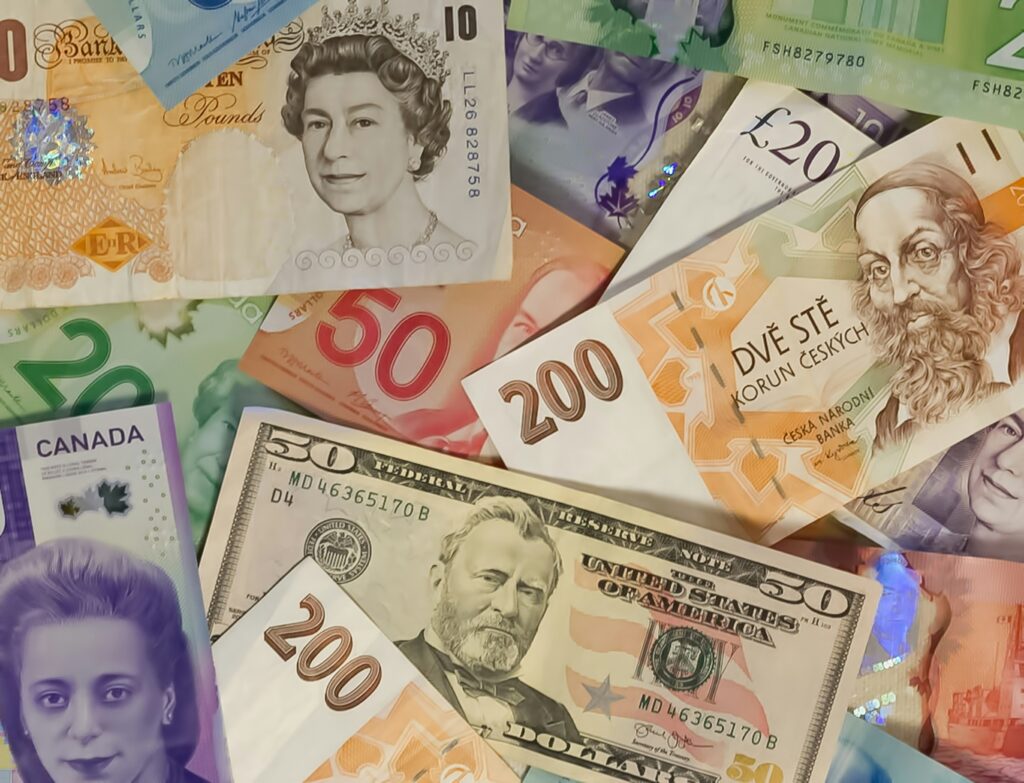Ever wondered how the rate of the rupee against the dollar is decided? Why do all the currency rates fluctuate all the time? Why are the rates of different currencies different from other currencies?
The currency exchange rates are determined by foreign exchange markets or Forex.

What is the foreign exchange market (Forex)?
Forex is a global marketplace where currencies of different countries are bought and sold. The forex was set up with the increase in globalization. With the supply chain becoming truly global the need for forex was established.
Consider an example of a mobile phone. The designing of its CPU is done in the USA, the manufacturing of its chip is done in China, its screen is sourced from South Korea, and its assembly is done in Vietnam. Every country will do their business in their local currencies. They would accept the payments in their currencies. However, since there are many currencies involved in this supply chain, there should be a way to standardize and decide the rates at which the currencies have to be accepted. This is where Forex comes into the picture.
The stakeholders in a Forex market decide the value of currencies relative to other currencies. The major participants in a forex market are multinational companies, governments, and investors & traders. Each one has its own purposes to be in the Forex like hedging, speculating, or facilitating international trade.
Factors affecting the value of currencies
Current account deficit
The current account deficit is when a country imports goods and services from a foreign country more than it exports. This means the country has to pay more amount of money in foreign currency than it receives in its own currency. This has to be done by borrowing foreign currencies in a huge amount by selling its own currency in the forex market. Also, this can loosen the investor confidence to invest as less exporting can mean a less productive nation. One method to attract foreign currency can be raising the interest rates which can mean slow growth as well.
Interest rates and inflation
A country with lower inflation means consumers have large purchasing power. This is a positive sentiment among the investors as their investments have a greater chances of succeeding because of a strong cash-flowing market. On the contrary higher inflation leads to negative investor sentiments.
Central banks adjust interest rates to manage inflation. When the inflation is higher, interest rates are lowered for an easy flow of money in the market. However, lower interest rates can mean less foreign currency inflow.
Central banks
Based upon the nation’s economic policies and strategies central banks can intervene in the Forex markets to achieve their objectives. This can involve buying or selling currencies to determine it’s value.
Market sentiment
Market sentiment is the attitude of investors and traders towards a currency and its market. It is a combination of multiple factors. Market sentiment reflects in the investor’s willingness to invest in a market. If the investors feel a market is not currently suitable to bet on, they would invest their capital in safer currencies. This leads to a depreciation in the currency value of the market.
Macroeconomic factors like GDP growth and inflation affect market sentiment. If these factors are strong, investments are favored by the investors.
Central bank decisions play an important role in determining the market sentiment. If a country is increasing its interest rates to combat inflation, foreign currency is attracted with a positive sentiment.
Geopolitical events like political instability, wars, or trade tensions lead to a negative sentiment and it can lead to lesser investments in the market.
Leave a Reply